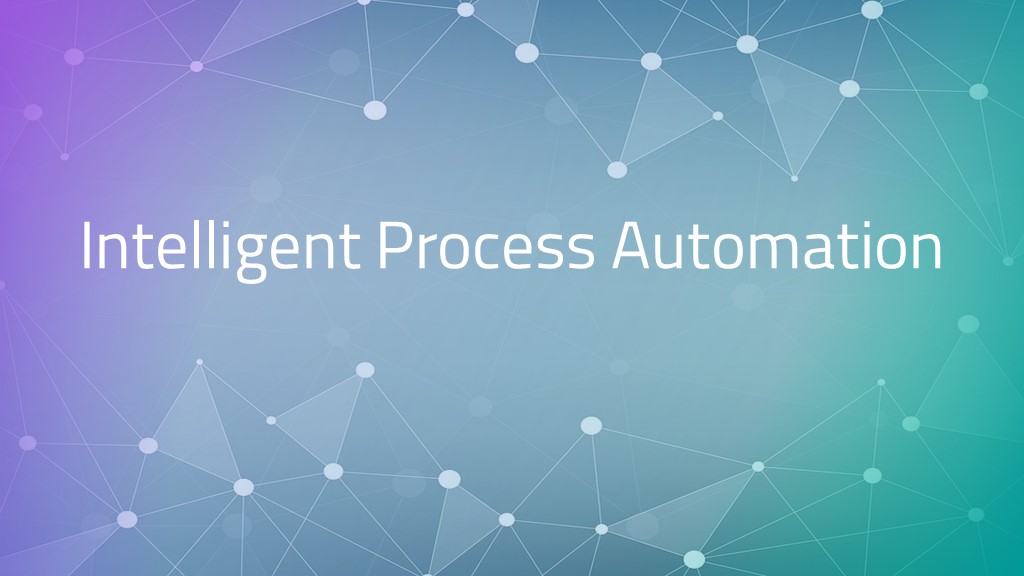What Is Intelligent Process Automation?[1]
Intelligent Process Automation (IPA) is a new technology that combines fundamental process redesign with Robotic Process Automation (RPA) and machine learning. It is a suite of emerging technologies, having business-process improvements and next-generation tools, that eliminates repetitive, replicable, and routine tasks for the knowledge worker. It can also improve customer journeys significantly by simplifying interactions and speeding up processes. Using this type of automation, the system is trained on the tasks performed by humans and, over time, learns to do them even better.

Thanks to the advances in deep learning and cognitive technology, organizations are able to augment traditional rule-based automation with decision-making capabilities.
Key IPA Technologies[2]
IPA is based on five core technologies. These are elaborated below:
- Robotic Process Automation – RPA is a software automation tool, like a robot user with its own user ID that automates routine tasks, such as data extraction and cleaning through existing user interfaces. It can access emails and systems, perform calculations, create documents and reports, check files and such other rules-based tasks.
- Smart Workflow – This is a process-management software tool, that is used to integrate activities carried out by groups of humans and machines, such as initiating and tracking the status of an end-to-end process in real-time, while managing hand-offs between different groups, including between robots and humans, and providing statistical data on bottlenecks.
- Machine Learning/Advanced Analytics – These are algorithms that identify patterns in structured data through “supervised” and “unsupervised” learning. This learning is then used to provide insights on recognized patterns. Machine learning and advanced analytics could be employed by insurance companies to improve compliance, reduce cost structures and even carry out succession planning to gain a competitive advantage from new insights.
- Natural Language Generation (NLG) – This technology employs software engines translate observations from data into prose, to create a seamless interaction between humans and technology, by following rules sets. NLG can also be used by financial institutions to replicate their management reports.
- Cognitive Agents – Organizations can build a virtual workforce with this technology, for executing tasks, carrying out communication, learning from data sets and even take decisions based on detection of emotion. This technology can be employed to support employees and customers over the phone or via chat.
Benefits of Intelligent Process Automation
IPA enables businesses to take faster and more intelligent decisions using advanced smart technologies and agile processes. The key benefits of IPA in business include:
- Increasing process efficiency
- Improving customer experience
- Optimizing back office operations
- Reducing costs as well as risks
- Optimizing the work force productivity
- More effective monitoring and fraud detection
- Product and service innovation
Implementing IPA
While implementing IPA transformation at scale, it is most important that the undermentioned crucial steps are implemented:
· Rapidly Align on IPA’s Role in the Operations – For the IPA implementation to be effective, there should be a clear understanding of the overall strategy of the business and how IPA would help achieve their goals. This will enable decision makers to apply IPA strategically where it makes most sense.
·Design Around the Full Portfolio of IPA Solutions to Maximize Impact – Organizations should not employ IPA technologies piecemeal. The full impact is evident only when IPA technologies work together. Though it may make more economic sense to implement holistic optimization programs in silos, this approach is inherently flawed. Individual technologies by themselves are not sufficient enough to capture value.
· Build a Rapid Minimum Viable Product (MVP) – As with other efforts at digitization, one of the recommended approaches would be to work towards launching a very stripped-down version of the product that can still accomplish the task. This is often referred to as an MVP. This would help identify what works and what doesn’t and make the required changes.
· Build Momentum and Capture Value – During IPA implementation, it is recommended that larger and longer-term developments should be combined with quick wins. A detailed road-map, sequencing automated modules for production, should be prepared to re-imagine the way teams should work to capture value.
· Embed Lasting Capabilities to Achieve Sustainability – The ability of the organization to sustain value creation would be crucial to the success of deployment of the IPA. One way to ensure this would be to create a Center of Excellence (CoE) to oversee the transformation and support the rapid deployment of IPA solutions.
· Coordinate Change Management and Communications – In order to manage redeployment, create interest, and align the change with the corporate strategy, it is crucial to employ a robust communications plan. Any new model will be successful only if properly aligned with the organizational culture, adaptability of employees to agile practices and development of change champions internally.
Conclusion
Deployment of IPA allows the system to take over rote tasks, while employees can focus on improving customer satisfaction and achieving business goals. It has the potential to improve worker performance, reduce operational risks, improve response times, and customer journey experiences and greatly enhance efficiency.
[1] https://www.mckinsey.com/business-functions/mckinsey-digital/our-insights/intelligent-process-automation-the-engine-at-the-core-of-the-next-generation-operating-model#
[2] https://www.mckinsey.com/business-functions/mckinsey-digital/our-insights/intelligent-process-automation-the-engine-at-the-core-of-the-next-generation-operating-model#









